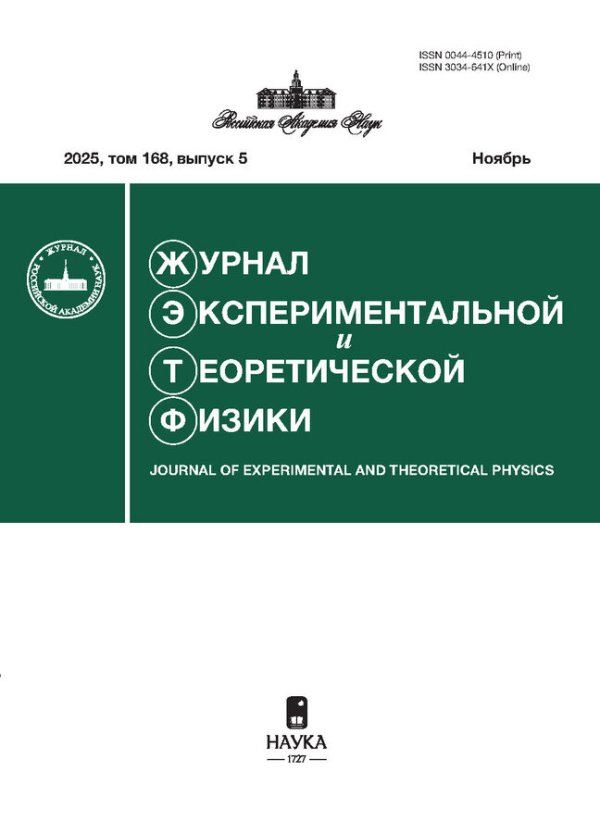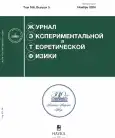EVALUATION OF THE ROTATING WAVE APPROXIMATION INFLUENCE ON POLARIZATION SPECTRA OF A TWO-LEVEL SYSTEM IN A POLYCHROMATIC FIELD
- Authors: Antipov A.G1, Uvarova S.V1
-
Affiliations:
- Saint Petersburg State University
- Issue: Vol 166, No 5 (2024)
- Pages: 575-587
- Section: ATOMS, MOLECULES, OPTICS
- URL: https://journal-vniispk.ru/0044-4510/article/view/268667
- DOI: https://doi.org/10.31857/S0044451024110014
- ID: 268667
Cite item
Abstract
Polarization spectra of a two-level system in a polychromatic field were obtained in two cases: using the rotating wave approximation and without using this approximation. The obtained spectra were compared using two indicators: the average deviation across the entire frequency range and the deviation at the transition frequency. Both indicators allow quantitative assessment of the distortion in polarization spectra introduced by the application of the rotating wave approximation. The dependencies of the above indicators on key model parameters were obtained – on the central frequency, detuning, and spectral width of the applied polychromatic field. The obtained dependencies allow evaluating the applicability limits of the rotating wave approximation for a given level of acceptable distortions in the polarization spectrum.
About the authors
A. G Antipov
Saint Petersburg State University
Email: a.antipov@phys.spbu.ru
Russian Federation, 199034, Saint Petersburg
S. V Uvarova
Saint Petersburg State University
Author for correspondence.
Email: usvik2015@gmail.com
Russian Federation, 199034, Saint Petersburg
References
- G. S. Agarwal, Phys.Rev.A 4, 1778 (1971).
- D. F. Walls, Phys. Lett.A 42, 217 (1972).
- F. Bloch and A. Siegert, Phys.Rev. 57, 522 (1940).
- I. I. Rabi, Phys.Rev. 51, 652 (1937).
- H. Haken, Handbuch der Physik, Springer, Berlin (1970), Vol.XXV/2C.
- L.E. Estes, T.H. Keil, and L.M. Narducci, Phys. Rev. 175, 286 (1968).
- M. S. Conradi, S.A. Altobelli, S. J. Sowko et al., J.Magn.Res. 288, 23 (2018).
- E. Jericha, C. G¨osselsberger, H. Abele et al., Sci.Rep. 10, 5815 (2020).
- E.T. Jaynes and F.W. Cummings, Proc. IEEE 51, 89 (1963).
- W.E. Lamb, Jr., Phys.Rev. 105, 559 (1957).
- W.E. Lamb, Jr., in Quantum Optics and Electronics, Gordon and Breach, New York (1965), p. 329.
- C.Tserkezis, A. I. Fern´andez-Dom´ınguez, P.A.D.Gon,calves et al., Rep.Prog. Phys. 83, 082401 (2020).
- I. Maldonado, J. Villavicencio, L.D. Contreras-Pulido, E. Cota, and J.A. Maytorena, Phys.Rev.B 97, 19531 (2018).
- G. Rastelli and M. Governale, Phys.Rev.B 100, 085435 (2019).
- S. Huber, M. Buchhold, J. Schmiedmayer, and S. Diehl, Phys.Rev.A 97, 043611 (2018).
- C. Jirauschek, M. Riesch, and P. Tzenov, Adv. Theory Simul. 2, 1900018 (2019).
- А. Г. Антипов, С.А. Пулькин, А.С. Сумароков и др., Опт. и спектр. 118, 977 (2015) [A.G. Antipov, S.A. Pulkin, A. S. Sumarokov et al., Opt. Spectr. 118, 945 (2015)].
- T. Armon and L. Friedland, Phys.Rev.A 102, 052817 (2020).
- A.G. Antipov, A.A. Kalinichev, S.A. Pulkin et al., J. Phys.: Conf. Ser. 735, 012029 (2016).
- А. Г. Антипов, Н.И. Матвеева, С.А. Пулькин, С. В. Уварова, Опт. и спектр. 121, 947 (2016) [A.G. Antipov, N. I. Matveeva, S.A. Pul’kin, and S.V. Uvarova, Opt. Spectr. 121, 879 (2016)].
Supplementary files










